Abstract
Among the several central meanings of Darwinism, his version of Lyellian uniformitarianism--the extrapolationist commitment to viewing causes of small-scale, observable change in modern populations as the complete source, by smooth extension through geological time, of all magnitudes and sequences in evolution--has most contributed to the causal hegemony of microevolution and the assumption that paleontology can document the contingent history of life but cannot act as a domain of novel evolutionary theory. G. G. Simpson tried to combat this view of paleontology as theoretically inert in his classic work, Tempo and Mode in Evolution (1944), with a brilliant argument that the two subjects of his title fall into a unique paleontological domain and that modes (processes and causes) can be inferred from the quantitative study of tempos (pattern). Nonetheless, Simpson did not cash out his insight to paleontology's theoretical benefit because he followed the strict doctrine of the Modern Synthesis. He studied his domain of potential theory and concluded that no actual theory could be found--and that a full account of causes could therefore be located in the microevolutionary realm after all. I argue that Simpson was unduly pessimistic and that modernism's belief in reductionistic unification (the conventional view of Western intellectuals from the 1920s to the 1950s) needs to be supplanted by a postmodernist commitment to pluralism and multiple levels of causation. Macro- and microevolution should not be viewed as opposed, but as truly complementary. I describe the two major domains where a helpful macroevolutionary theory may be sought--unsmooth causal boundaries between levels (as illustrated by punctuated equilibrium and mass extinction) and hierarchical expansion of the theory of natural selection to levels both below (gene and cell-line) and above organisms (demes, species, and clades). Problems remain in operationally defining selection at non-organismic levels (emergent traits vs. emergent fitness approaches, for example) and in specifying the nature and basis of levels, but this subject should be the central focus in formulating a more ample and satisfactory general theory of evolution on extended Darwinian principles.
Full text
PDF
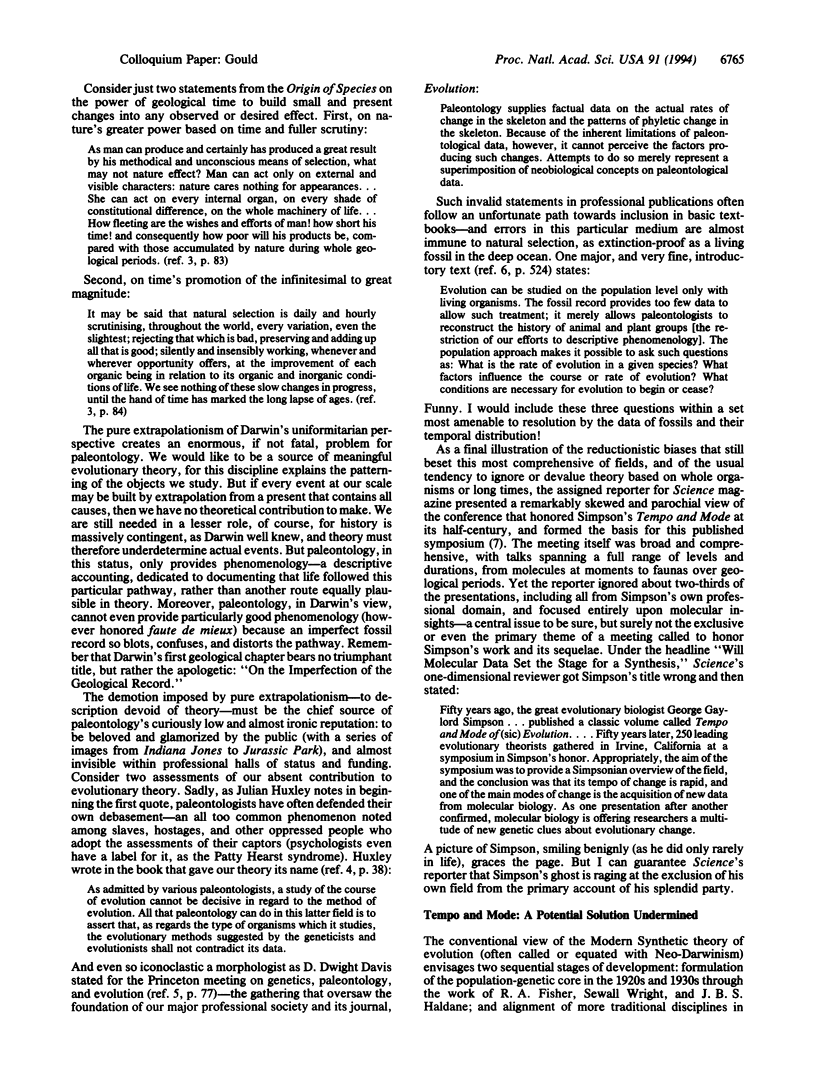
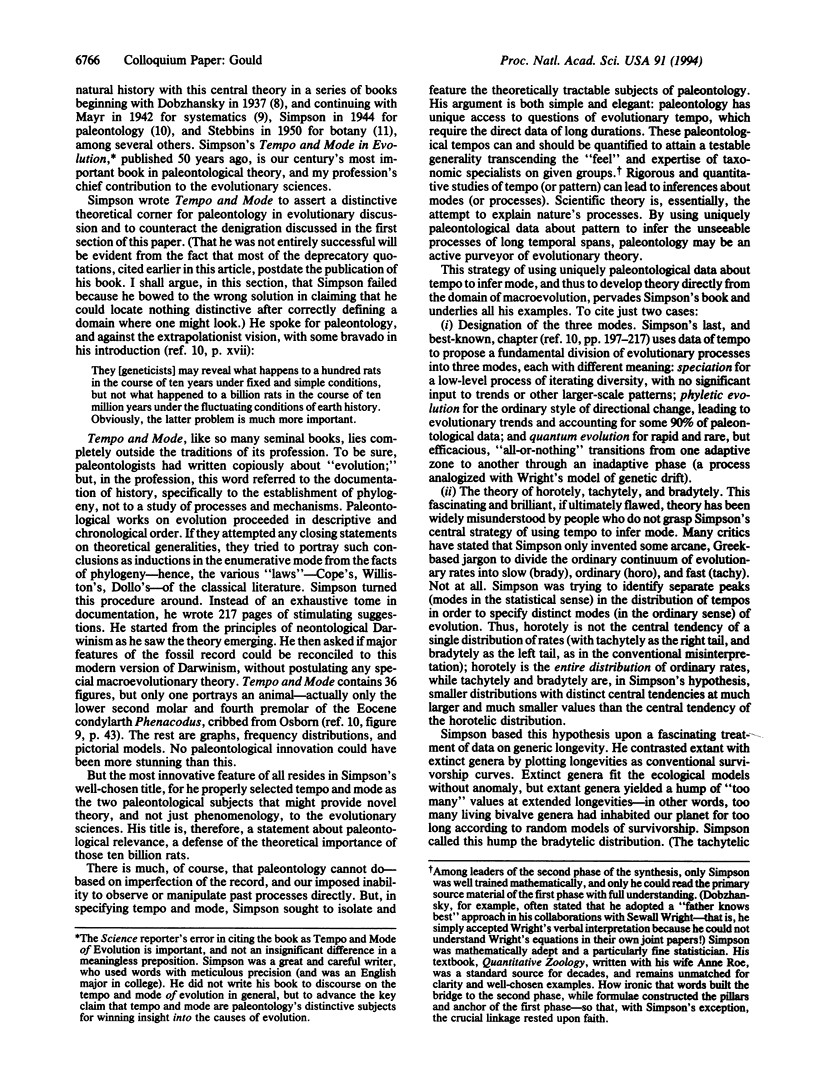

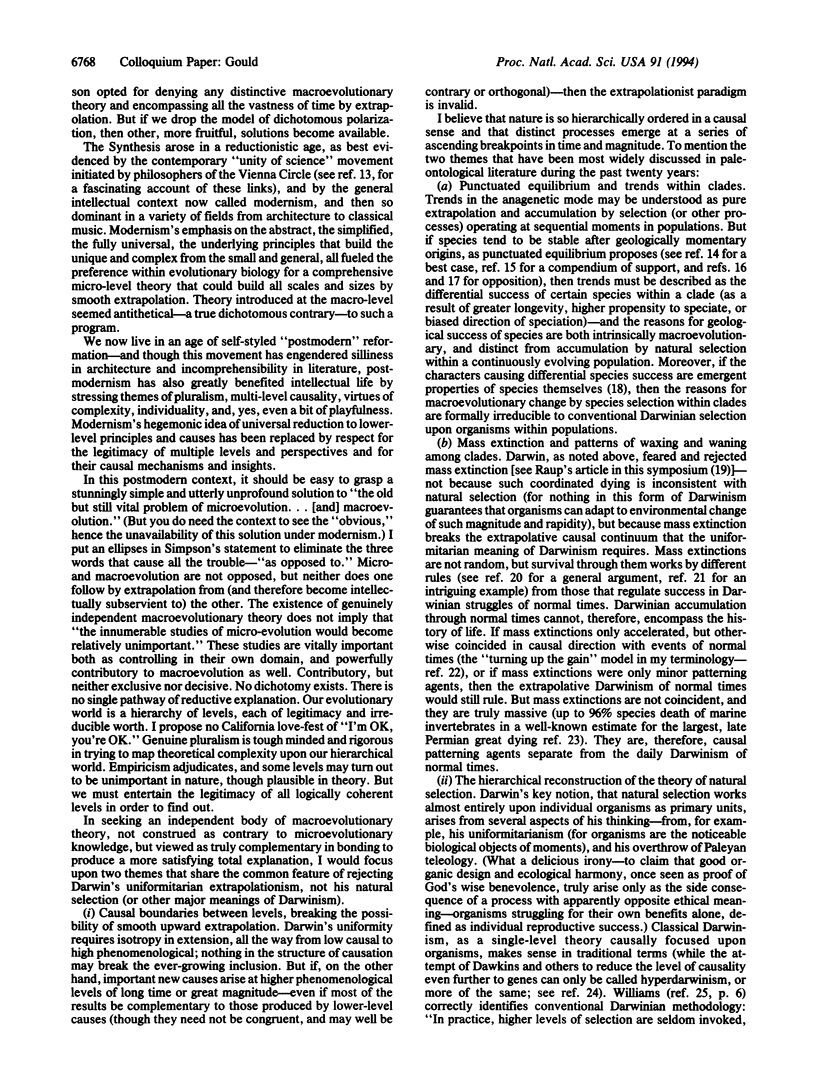
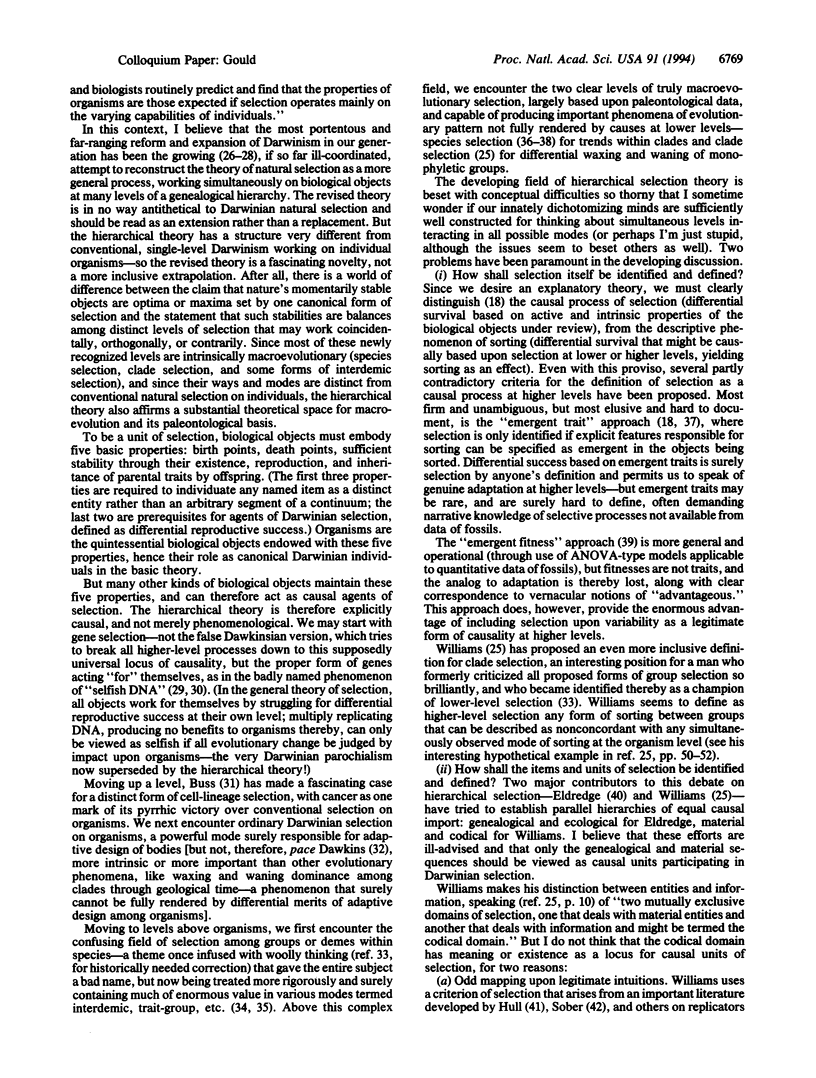
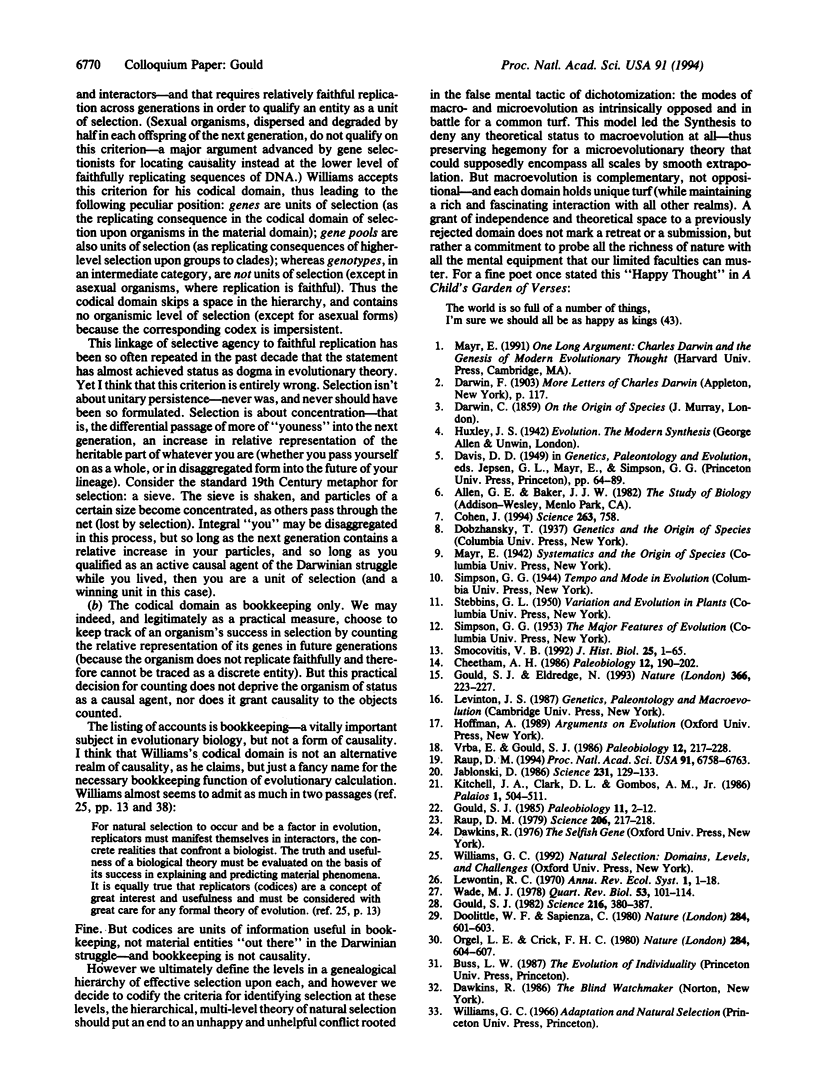

Selected References
These references are in PubMed. This may not be the complete list of references from this article.
- Cohen J. Will molecular data set the stage for a synthesis? Science. 1994 Feb 11;263(5148):758–758. doi: 10.1126/science.8303291. [DOI] [PubMed] [Google Scholar]
- Doolittle W. F., Sapienza C. Selfish genes, the phenotype paradigm and genome evolution. Nature. 1980 Apr 17;284(5757):601–603. doi: 10.1038/284601a0. [DOI] [PubMed] [Google Scholar]
- Gould S. J. Darwinism and the expansion of evolutionary theory. Science. 1982 Apr 23;216(4544):380–387. doi: 10.1126/science.7041256. [DOI] [PubMed] [Google Scholar]
- Gould S. J., Eldredge N. Punctuated equilibrium comes of age. Nature. 1993 Nov 18;366(6452):223–227. doi: 10.1038/366223a0. [DOI] [PubMed] [Google Scholar]
- Jablonski D. Background and mass extinctions: the alternation of macroevolutionary regimes. Science. 1986 Jan 10;231(4734):129–133. doi: 10.1126/science.231.4734.129. [DOI] [PubMed] [Google Scholar]
- Jablonski D. Heritability at the species level: analysis of geographic ranges of cretaceous mollusks. Science. 1987 Oct 16;238(4825):360–363. doi: 10.1126/science.238.4825.360. [DOI] [PubMed] [Google Scholar]
- Lloyd E. A., Gould S. J. Species selection on variability. Proc Natl Acad Sci U S A. 1993 Jan 15;90(2):595–599. doi: 10.1073/pnas.90.2.595. [DOI] [PMC free article] [PubMed] [Google Scholar]
- Orgel L. E., Crick F. H. Selfish DNA: the ultimate parasite. Nature. 1980 Apr 17;284(5757):604–607. doi: 10.1038/284604a0. [DOI] [PubMed] [Google Scholar]
- Raup D. M. Size of the permo-triassic bottleneck and its evolutionary implications. Science. 1979 Oct 12;206(4415):217–218. doi: 10.1126/science.206.4415.217. [DOI] [PubMed] [Google Scholar]
- Raup D. M. The role of extinction in evolution. Proc Natl Acad Sci U S A. 1994 Jul 19;91(15):6758–6763. doi: 10.1073/pnas.91.15.6758. [DOI] [PMC free article] [PubMed] [Google Scholar]
- Smocovitis V. B. Unifying biology: the evolutionary synthesis and evolutionary biology. J Hist Biol. 1992 Spring;25(1):1–65. doi: 10.1007/BF01947504. [DOI] [PubMed] [Google Scholar]
- Stanley S. M. A theory of evolution above the species level. Proc Natl Acad Sci U S A. 1975 Feb;72(2):646–650. doi: 10.1073/pnas.72.2.646. [DOI] [PMC free article] [PubMed] [Google Scholar]


